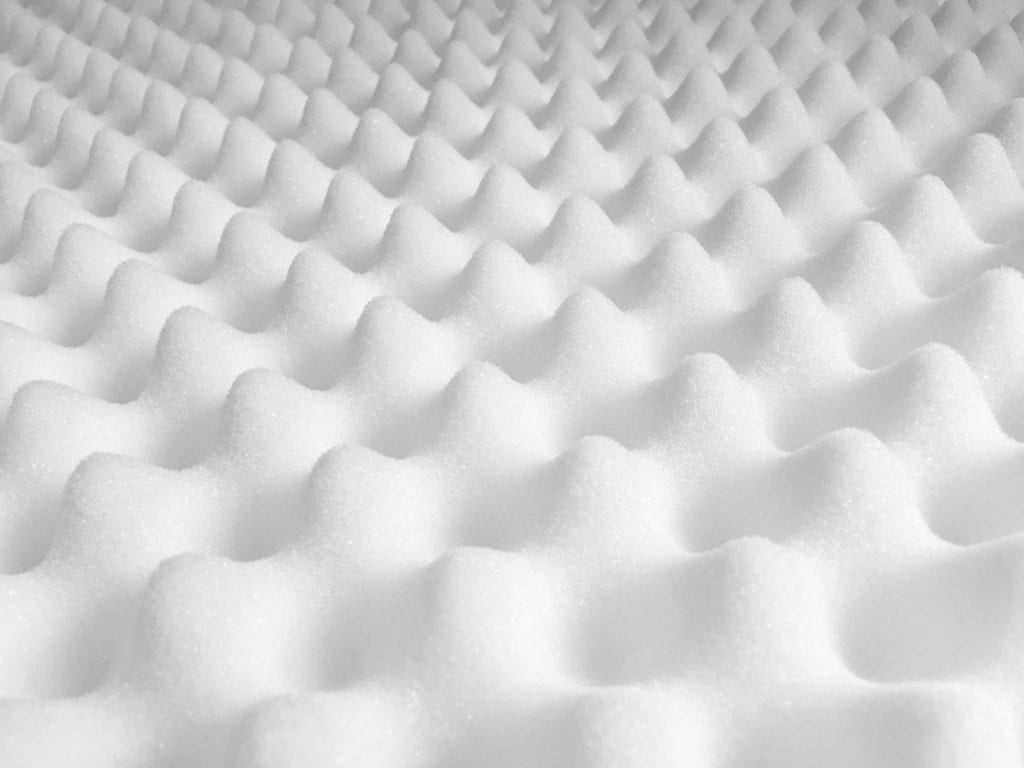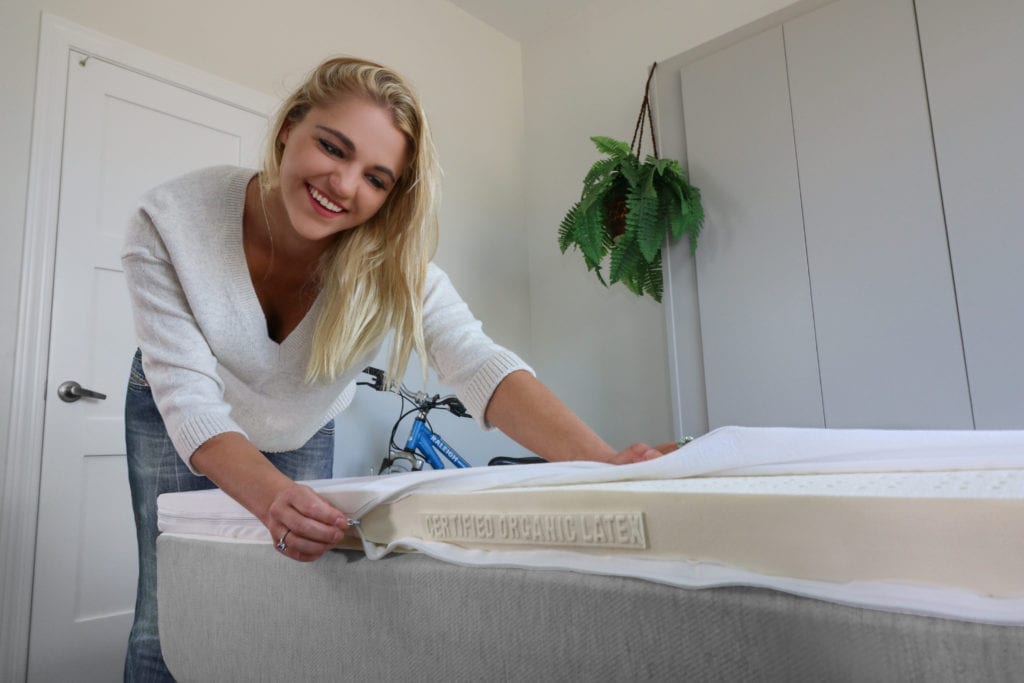Help, I need to fix my mattress! I’ve heard of memory foam but researching online I also see latex toppers. Which should I choose?
This is a common question. We’ll break down the pros and cons for both memory foam and latex to help you choose the best product to solve your specific problem(s).
How are they made?
Memory Foam

Memory foam is made from petroleum-based hydrocarbons, mixed into a slurry and chemically molded into large solid form “buns”, after which the buns are cut into slices for mattress toppers. Depending on the chemical formulation, memory foam is available in density ranges from 1.1 lbs (super soft) – 4.0 lbs. (extra firm).
Pros – Memory foam initially relieves pressure and is produced by hundreds of manufacturers, products are readily found at large retailers and online. Low-density options can be purchased at economical prices.
Cons – It’s a chemical product, technically a plastic, low-density options wear out quickly.
Latex

Latex is produced using one of two methods, Dunlop and Talalay. While manufacturers of each tout their method the best, the truth is both processes produce comparable quality latex depending on the ingredients used. Both methods mix a “liquid compound” that’s poured into a mold and heated via hollow pins in the mold to “vulcanize” into a solid foam. This gives latex it’s telltale holes. There are four different varieties of “liquid compound”. Latex densities range from 3.4 lbs (super soft) – 5.9 lbs (extra firm)
Latex Compound Varieties
Synthetic latex compound: petroleum chemical-based “man-made” molecular reproduction of natural latex.
Blended latex compound: Synthetic latex mixed with natural latex from rubber trees. Most blends are 80% – 90% synthetic latex.
Natural latex compound: 100% natural latex renewably harvested from latex trees.
Organic Natural latex compound: 100% natural latex renewably harvested from latex trees farmed utilizing organic practices without the use of pesticides. Look for GOLS organic certifications.
Pros – Natural & organic latex is rubber which is more durable than petroleum-based foam and provides active support in addition to pressure relief. 100% natural and organic products are available.
Cons – Latex is more difficult to find at large retailers, however, easily found online. While high-density options are a similar cost to memory foam, low-density latex is usually more expensive than low-density memory foam.
How does each work?
Memory Foam
Memory foam uses body heat to soften the molecular structure so it can mold to your body. The longer you lay on memory foam the greater the transfer of body heat which creates greater contouring. When you get up it takes time for the memory foam to release the body heat which is why an indentation is visible after rising but slowly goes away. Memory foam products often show a handprint in the foam on marketing materials to illustrate this effect.
Pros – 3 inches or more of high-density memory foam will provide pressure relief for shoulders and hips when laying on your side.
Cons – Due to the need for body heat to activate many feel it sleeps hot. Less than 3 inches of low-density memory foam will flatten quickly eliminating the pressure relief benefit. Some report a “stuck in the mud” feeling as you sink through memory foam.
Latex
Natural latex is supple rubber. Rubber is inherently elastic. Body heat is not required for it to contour or mold to your body. The elasticity of latex, like a rubber band, stretches to contour and relieve pressure while simultaneously pushing back to provide support.
Pros – Latex is dual-action; it contours to relieve pressure and simultaneously pushes back to provide support for spinal posture. Latex doesn’t require heat to activate and doesn’t bottom out for most people using 2 inches or more. Latex does not sleep hot.
Cons – Some describe a bouncy feeling due to its natural elasticity.
Do they relieve pain?
Understanding morning pain: there are two major reasons mattresses cause body pain.
- Pressure – Mattress pressure on your body causes pain in joint areas such as shoulders, hips, knees & ankles. When a mattress is too hard or if you fall through the soft top layer(s) and bottom out on the hard foam or coil layer below it jambs your bones together, pinching your joint areas and reducing circulation. When circulation is reduced, joint health diminishes. It takes time once you wake up and start to move for your body to resupply your joints with necessary oxygen and nutrients via circulation.
- Support – Your spine, when in proper posture, is naturally “S” shaped. When sleeping, your muscles relax and your posture conforms to the surface it’s laying on. When a mattress is too soft, or you sink into it too deeply, your spinal posture reconfigures into a “C” shape. When your mattress is too stiff your spinal posture flattens out. When either of these situations occurs, your muscles need to reconfigure your posture back into an “S” so you can move comfortably. This realignment process hurts, it’s recognized by stretching, bending and twisting after you get up from the bed. In the absence of a medical condition or injury, morning pain from your mattress subsides with time once your body readjusts.
Memory Foam Pros – Pressure can be relieved with the proper amount of memory foam, generally 3 inches or more for most. Very slender people or those with minor morning discomfort may find relief with 2 inches.
Memory Foam Cons – Support can not be achieved as memory foam has no resistance to maintain spinal posture, your body will contour to whatever lies beneath a memory foam topper.
Latex Foam Pros – Pressure can be relieved with as little as 2 inches of latex for most due to its elastic contouring. Support is provided by the natural elastic properties of rubber which push back, preventing realignment of spinal posture and reducing morning back pain.
Latex Foam Cons – While 100% Natural or Organic latex performs as stated in “Pro’s”, synthetic latex does not perform the same.
While it can be confusing trying to find the right solution to help you sleep better, we hope this information provides some clarity. Memory foam and latex are very different from each other, in fact, in the world of foam, they’re polar opposites. But both have successfully helped many, many people sleep better, we hope you find one that provides comfort and relief.
Sleep well!

